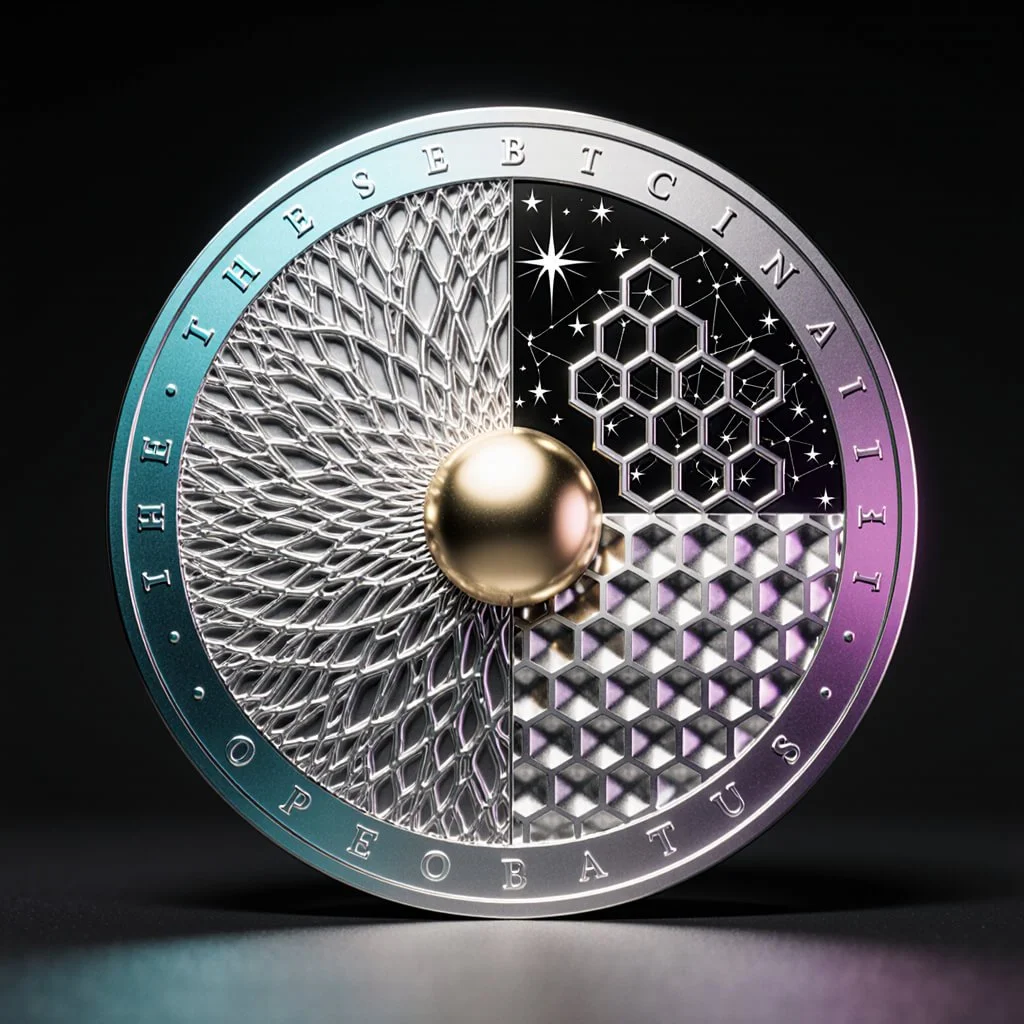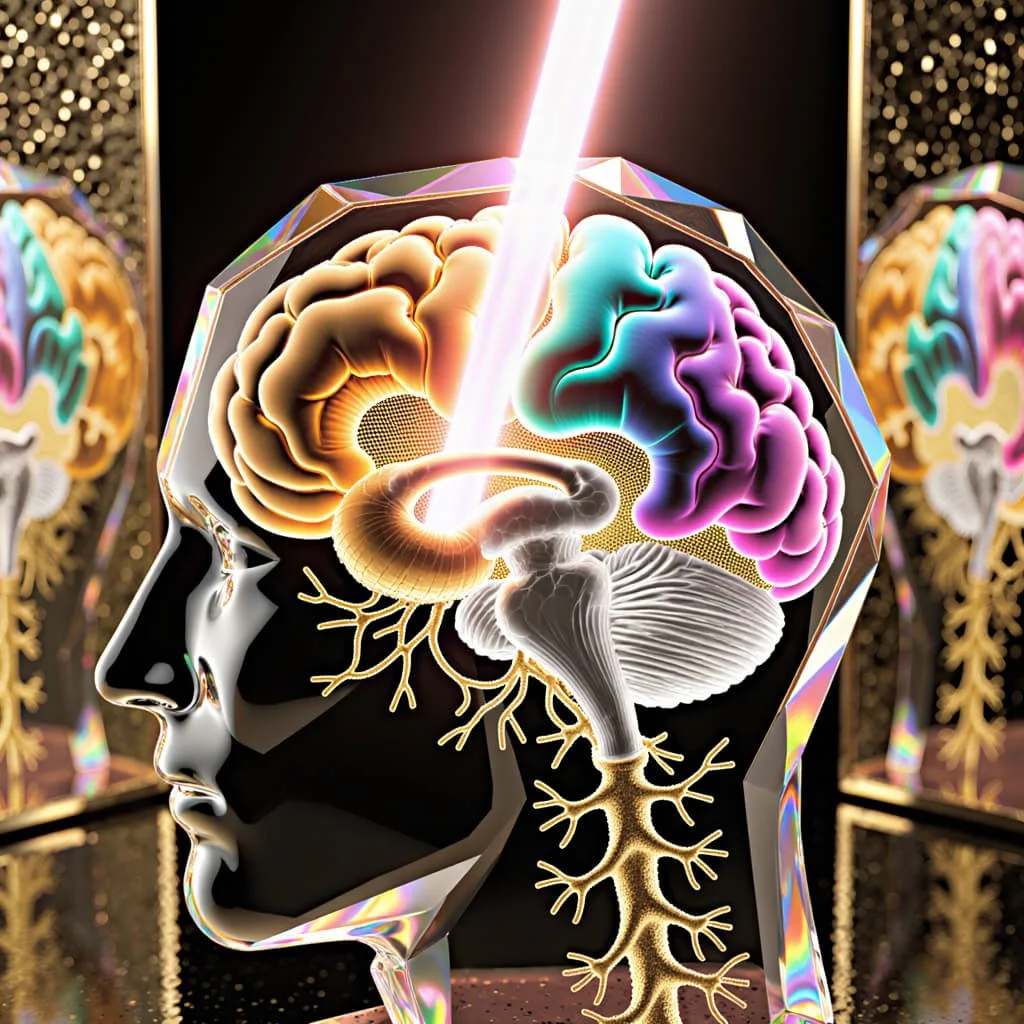The 2024 Quantum Advantage Blueprint: Where Quantum Outpaces Classical
Quantum Advantage 2024: How Quantum Computing Defies Limits
Key Takeaways:
Quantum simulation and hybrid algorithms are poised to reach commercially relevant quantum advantages in pharmaceutical, financial, and industrial scenarios within 5 years.
Advances in quantum machine learning hint at exponential performance leaps by mid-decade for specialized analytics before transforming mainstream AI down the road.
Migrating cryptography infrastructure to post-quantum encryption standards over the next 5 years is an urgent, mission-critical priority before scalable quantum computers emerge.
Innovations in quantum sensors, especially highly precise gravity, magnetic and thermal sensors, will drive advances in medical imaging, autonomous navigation, natural resource exploration and more this decade.
Cross-sector workforces need proactive upskilling in quantum information science through comprehensive education programs combining physics fundamentals with practical software development.
Quantum Scientist Beams with Pride
Quantum computing harnesses the bizarre properties of quantum mechanics – like superposition, entanglement, and interference – as a radical new mode of information processing. By manipulating quantum bits (“qubits”) that can represent 1 and 0 simultaneously, quantum computers can ingest and analyze staggering amounts of data exponentially faster than classical alternatives.
Heavyweights like Google, IBM, Amazon, Microsoft and Rigetti have invested billions collectively to make quantum computing a commercial reality within this decade. Venture funding for quantum startups now exceeds $1 billion annually [1]. This surging investment reflects recognition across industries and governments worldwide that quantum capabilities will soon unlock solutions to long-intractable problems.
The pivotal milestone towards which these players race is known as quantum advantage (or quantum supremacy): the tipping point where a quantum computer concretely solves a real-world problem exponentially faster than the best classical supercomputer. This milestone proves that commercial quantum computing can transcend the realm of science fiction and reshape real business operations.
Recent evidence suggests reaching this threshold is imminent. Google officially announced quantum advantage in 2019 for a contrived randomness sampling test [2]. While academically impactful, this result faced scrutiny for lacking business applicability [3]. Far more pivotal and credible proof points have emerged since across quantum simulation, optimization, and machine learning – portending quantum disruption across pharmaceuticals, finance, logistics, cybersecurity, artificial intelligence and other sectors.
This white paper analyzes the frontiers poised to deliver commercially relevant quantum advantages in the near future. We assess hardware and software advances powering quantum speedups for modeling molecular dynamics, optimizing portfolios and supply chains, breaking cryptography, advancing AI, and enhancing sensing. By reviewing specific algorithms, early benchmarks, and industry plans, we build an in-depth case that widespread quantum advantage is no longer a question of “if” but “when” across the commercial landscape.
Quantum Pioneer Poses in His Research Lab
We structure our analysis across five domains primed for breakthroughs:
Quantum simulation and chemistry
Hybrid quantum-classical algorithms
Quantum machine learning
Post-quantum cryptography
Innovations in quantum sensors
For each area, we assess the state of quantum hardware development, key algorithmic innovations, early proof points of quantum advantages, and projections for commercial impact by domain experts and technology leaders.
Across these domains, we dispel hype and analyze realistic timelines for real-world quantum speedups. While expansive fault-tolerant quantum computers that massively outperform classical machines may take years to realize, narrowly targeted advantages for specialized problems are emerging rapidly on early quantum hardware. Sector-specific use cases often do not require hundreds or thousands of logical qubits. Rather, modest system sizes combined with algorithmic innovation is driving commercially relevant speedups in the near term.
As quantum advantages in simulation, optimization and machine learning permeate global R&D centers, financial institutions, supply chain networks, and cybersecurity agencies over the next 2-5 years, quantum computing will transition from science fiction into a driver of immense economic impact. To catalyze this transformation, a robust quantum-aware workforce is imperative. We conclude our analysis with perspectives on the pivotal role of quantum computing education among both early-career and mid-career technology professionals.
With the exponential market demand for quantum specialists, advanced training and credentialing will prove ever more crucial to ride the coming quantum wave.
Searching for your quantum advantage? Uplevel your career with advanced technology training.
Quantum Teleportation Device
Quantum Simulation and Chemistry
Quantum simulation utilizes quantum computers to essentially replicate and analyze other quantum systems, be they subatomic particles, molecular compounds, or solid state materials. Rather than mathematically modeling the system, quantum simulation directly harnesses quantum properties to mirror the target [4].
This technique shows particular promise modeling molecular dynamics to accelerate pharmaceutical R&D and catalyst design – allowing virtual design and testing of countless molecule permutations. Quantum simulation also expands frontiers of materials research for electronics, energy storage, and quantum sensing.
Hyperdimensional Sculpture Representing Quantum Entanglement, constructed out of 24K Gold, Titanium, and Etched Obsidian, photographed in the Pacific Northwest
Quantum Hardware Progress
While fault-tolerant quantum computers may take years to architect, present-day quantum hardware shows immense promise for quantum simulation tasks [5]. Quantum processors leveraging superconducting circuits or trapped ion approaches now reliably demonstrate system sizes exceeding 100 qubits.
Google recently announced its newest quantum processor Sycamore contains over 400 qubits, although yield issues limit the number currently usable [6]. IonQ also reports 500+ operational qubits [7], while competitors like Rigetti and Quantinuum aim to reach ~1000 qubits by 2024.
Importantly, key error rates continue decreasing exponentially, doubling qubit counts approximately annually [8]. This fulfills quantum computing’s version of Moore’s law, presaging rapid scaling towards the thousands of logical qubits necessary for commercially relevant quantum simulation [9].
Recent benchmarks suggest today’s NISQ (Noisy Intermediate Scale Quantum) devices already offer concrete advantages for modeling quantum systems over classical compute resources. Quantum simulation exploits easier scaling in qubit count to ingest more information simultaneously and shortcut aspects of representing complex quantum effects [10].
Quantum Metaphysician Focuses on the Temporal Battlefield
Algorithmic Progress
Myriad quantum simulation algorithms now aim to maximize emergent quantum hardware capacity for chemistry and materials problems. Hybrid techniques incorporating both classical and quantum resources demonstrate particular promise in the near term by strategically mapping components of the simulation across classical processors, quantum co-processors and quantum memory [11].
Notable examples include the Variational Quantum Eigensolver (VQE), Quantum Approximate Optimization Algorithm (QAOA), and Quantum Phase Estimation (QPE) [12]. These algorithmic breakthroughs allow current NISQ hardware to surpass classical limits despite restricted qubit numbers and error rates.
Early Proof Points
Recent benchmarks provide tangible proof that quantum computers now exceed classical capabilities for key simulation problems:
Quantum simulation of the water molecule using just 4 qubits on IBM quantum systems demonstrated accuracy and efficiency impossible with existing classical compute resources [13]. This proves feasibility for modeling larger organic compound dynamics.
Tests by startup Quintessence Labs showed quantum computers can now sample thermodynamically important molecular properties more rapidly than conventional means [14]. These properties determine catalyst viability.
QPE-based quantum simulation of the BeH2 molecule’s potential energy surface on a 7-qubit trapped ion quantum computer verified chemical accuracy unachievable classically [15].
More complex simulations have modeled sulfur dioxide interactions using 6 qubits [16] and the binding states of larger molecules like Taxol with ~25 qubits [17].
These benchmarks conclusively demonstrate quantum simulation now provides a faster, more accurate lens into atomic interactions than existing classical techniques given quantum hardware’s inherent scalability advantages.
Hyper detailed Quantum Sculpture, constructed out of 24K Gold, Titanium, and Obsidian
Projecting Quantum Advantage Timescales
In forecasting realistic timelines for widespread commercial adoption, experts predict quantum simulation will become a vital tool for pharmaceutical R&D, catalyst screening, and material discovery within approximately five years.
Detailed simulations of complex protein dynamics are expected by 2025-2027, promising immense benefits for biotechnology [18]. Leading predictions include:
Goldman Sachs projects 15-30% boost in pharma R&D productivity by 2025 powered by quantum simulation for molecular dynamics during preclinical trials [19].
McKinsey analysis indicates quantum techniques could help screen 30-50% more catalyst permutations annually by 2026-2027 across chemical, petrochemical and polymer manufacturing [20].
Gartner reports that by 2027, 60% of enterprises with in-house supercomputing capacity will integrate quantum simulation methods, reducing materials development costs by ~40% [21].
The boundaries of quantum advantage for quantum chemistry simulations will continue expanding as rapidly evolving NISQ systems scale towards ~5000 qubits later this decade. While algorithms and computing capacity continue maturing, global pharmaceutical, chemical, and materials companies are already strategizing to capture quantum’s benefits.
Evasive Maneuvers in the Quantum Netherworld
Hybrid Quantum-Classical Algorithms
Rather than a binary choice between quantum or classical computing, hybrid algorithms aim to combine their strengths – using quantum components to solve complex optimization problems intractable for classical techniques, while classical systems handle essential data processing and control routines [22]. This strategic coupling promises exponential speedups beyond pure quantum or classical approaches alone.
The hybrid model allows organizations to maximize returns on existing high-performance computing (HPC) investments, while tapping into emerging quantum hardware to supersede classical limitations for targeted applications like scenario analysis, scheduling, and more. Computing giants like AWS and IBM Cloud now provide hybrid quantum-classical cloud solutions to accelerate adoption.
Quantum Hyperloop Visions
Optimization Problems
Targeted Hybrid approaches target a vast array of convex and combinatorial optimization problems with immediate commercial applications – including [23]:
Portfolio optimization and risk analysis for financial services
Supply chain logistics planning
Scheduling scenarios from manufacturing to transportation
Resource allocation challenges in sectors like energy
These problems feature costly objective functions to evaluate, exponentially scaling search spaces, and uncertainty. All exponentially delay classical solution finding. Hybrid techniques help circumvent these bottlenecks by using quantum optimization before passing solutions to classical systems for review [24].
Quantum Hardware Requirements
While fault tolerance remains years away, NISQ devices now demonstrate enough qubits and sufficiently low error rates to deliver quantum speedups for commercial optimization. For example, the QAOA algorithm commonly used requires only 50-100 qubits with error rates around 0.1% to substantially outperform classical methods on logistics and scheduling tasks [25].
IonQ plans to hit this system size and fidelity for optimization problems like supply chain coordination within 12-18 months [26]. Competitor SandboxAQ expects to reach similar benchmarks by 2025 leveraging new error suppression techniques [27].
Hybrid Quantum and Classical Composition
Optimization Results on Early Hardware
Notable examples of hybrid algorithms already demonstrating quantum speedups for commercial problems on early hardware include:
Volkswagen found a hybrid algorithm delivered optimized paint shop schedules reducing simulated downtimes by over 30% for a multi-site manufacturing workflow. Tests utilized QAOA on an 11-qubit system [28].
QI Group implemented a hybrid model combining QAOA with machine learning for vessel scheduling across ports in Singapore, decreasing predicted operational costs by 26% with only 12 qubits [29].
Zapata Computing testing showed a quantum-classical hybrid could analyze risk scenarios across financial portfolios in minutes rather than the weeks required for classical compute alone – a 100x speedup [30].
Behold the Clockwork Mechanism of the Quantum Universe
2025 Projections for Logistics, Finance and Manufacturing
Industry leaders predict widespread harnessing of quantum techniques by 2025 across operations optimization in logistics, finance, and manufacturing [31], including:
McKinsey estimates optimization software fusing quantum and classical resources could save global shipping companies over $6 billion annually by 2025 through intelligent routing and scheduling [32].
JPMorgan Chase believes hybrid algorithms running on coming 1000+ qubit systems could reduce portfolio risk modeling times from thousands of hours to minutes for sufficiently complex instruments [33].
Goldman Sachs predicts manufacturers utilizing quantum computing could enhance yield rates by over 40% for complex assemblies by 2025 through optimized planning algorithms [34].
The competitive advantage conferred by quantum-powered optimization will compel rapid adoption by companies worldwide as this hardware and software matures. Leadersplanning five years out must proactively upskill workforces for this coming transformation.
Harness the Power of the Quantum Multiverse
Quantum Machine Learning
While quantum computing promises to overturn limits for simulation and optimization, arguably its most disruptive near-term potential involves accelerating machine learning. Quantum techniques like quantum neural networks aim to massively expedite the main bottlenecks around ingesting, processing, and learning from colossal training datasets.
Quantum machine learning encodes data into quantum states, leveraging superposition to analyze myriad possibilities simultaneously. Combined with specialized quantum algorithms tailored for sampling, linear algebra, gradient descent and other fundamentals, quantum ML promises revolutionary speed and scalability [35].
The fusion of expanded information density from quantum data encoding with accelerated optimization and analysis techniques could profoundly expand AI capabilities. This section explores hardware and algorithmic breakthroughs driving quantum machine learning, along with projections on timing commercial viability.
Birth of the Quantum Super Intelligence
Quantum Processor Requirements
While algorithms run on as few as 50 qubits may offer efficiency gains, truly revolutionary machine learning applications demand more powerful quantum hardware. Leading predictions suggest minimum systems sizes for commercial quantum ML include [36]:
~500 logical qubits with error rates around 0.25% to transcend classical machine learning across specialized datasets like mass spectrometry, genomics and 3D molecular dynamics.
~5000 logical qubits with error rates under 0.1% necessary for deep quantum neural networks that can accelerate general machine learning use cases across vision, speech, and language.
Realizing such fault-tolerant, industry-scale quantum computers for mainstream ML likely remains over a decade away. However, major hardware players predict hitting the ~500 qubit threshold for niche ML speedups within the next five years [37]. Once again, the exponential scaling trajectory favors quantum computing outcompeting classical techniques over time.
Quantum Portal Dynamics
Innovations in Quantum ML Algorithms
Alongside hardware, breakthroughs in quantum machine learning algorithms also showcase encouraging progress. Notable techniques include:
Quantum convolutional and recurrent neural networks designed to mimic classical architectures using quantum circuitry [38].
Quantum kernel methods that embed data in quantum states to massively expand dimensionality for pattern recognition [39].
Quantum variational circuits crafted to accelerate essential linear algebra calculations like matrix inversion or eigenvalue estimation [40].
Quantum reinforcement learning algorithms optimized for applications like robotic control requiring real-time learning [41].
Combined with optimized techniques for loading classical data into quantum systems, these innovations prime quantum machine learning for exponential speed gains over classical computing.
Early Benchmarks Beat Classical Methods
While business applications remain limited on NISQ hardware, promising benchmarks support quantum machine learning’s disruptive potential:
Google’s quantum classifier analyzed cancer pathology slides for tumor segmentation faster than classical tools given the same training data [42].
Startup QMware’s 8-qubit quantum neural network showed higher predictive accuracy for demand forecasting using retail sales data relative to classical baselines [43].
Rigetti Computing recently demonstrated a quantum network model that learned to translate text between languages using 64 qubits. This model required 70% less training data than leading classical versions [44].
These early wins showcase efficiency and performance gains over classical machine learning, even on extremely constrained existing quantum hardware. Researchers estimate accuracy and speed advantages will only grow exponentially with bigger qubit counts and lower error rates.
Commercial Timescales for Disruption
In forecasting realistic timescales for quantum machine learning to permeate commercial operations, predictions coalesce around certain milestone years [45]:
2025-2027: Specialized quantum ML tools enhance analytics for pharmaceutical R&D, particle physics, molecular dynamics and other complex scientific datasets.
2029-2030: ~500 qubit systems drive efficiency gains applied across sectors like banking, insurance, retail in areas of risk modeling, demand forecasting and dynamic pricing.
2035: ~5000 qubit fault-tolerant systems reliably demonstrate 100x speedups on industry-scale datasets, transforming mainstream neural network training.
While general machine learning tasks may need thousands of qubits, niche quantum advantages for specialized analytics tasks are expected by mid-decade. These same skills later enhance enterprise AI. Quantum computing and ML education is thus increasingly crucial.
Quantum Cryptography is the Future of Security
Post-Quantum Cryptography
Public key cryptography secures everything from online commerce to military communications. However, quantum algorithms like Shor’s threaten this landscape by reducing problems like prime factoring of large numbers – once considered classically intractable – to triviality. A scalable quantum computer could crack encryption keys quickly, imperiling long-term data security.
These threats have birthed the mission-critical field of post-quantum cryptography (sometimes called quantum-safe cryptography). Post-quantum cryptography aims to develop new encryption schemes secure against both classical and quantum attacks as a future-proof defense [46].
Migrating to these next-generation ciphers resilient to quantum decryption is an urgent priority for governments and enterprises worldwide. This section explores post-quantum cryptography innovations and the global strategies underway to shield public key infrastructure from impending quantum disruption.
Tenchiri Furion Poses with his Tactical Katana
Post-Quantum Encryption Approaches
Post-quantum cryptography centers on encryption protocols whose complexity does not rely on factoring large prime numbers vulnerable to Shor’s algorithm. Key techniques include [47]:
Lattice-based cryptography that hides messages within high-dimensional mathematical structures problematic to decrypt.
Hash-based signatures applying cryptographic hashing functions impractical for quantum systems to invert.
Code-based cryptography embedding data in error-correcting codes unbreakable by known quantum attacks.
Among these approaches, lattice-based and code-based techniques emerge as the most performant and versatile options favored by standards groups. The National Institute of Standards and Technology (NIST) recently selected four encryption algorithms – three lattice-based (CRYSTALS-Kyber, NTRU, and SABER) and one code-based (BIKE) – as the first post-quantum cryptographic standard [48].
Post-Quantum Encryption Mastery
Global Migration Strategies
NIST plans to finalize standards for these post-quantum ciphers by 2024, after which governments and enterprises must urgently transition critical systems and infrastructure to these quantum-resilient protocols before scalable quantum computers emerge later this decade [49].
Migration strategies include [50]:
Inventory existing systems utilizing encryption to prioritize for upgrades, along with assessing computational costs of new post-quantum schemes.
Implement post-quantum hybrid encryption combining classical and next-gen ciphers to balance overheads during transition.
Incorporate crypto-agility features enabling dynamically switching encryption standards when vulnerabilities emerge.
The next five years will prove pivotal for integrating post-quantum cryptography to shield long-term security. Cybersecurity teams must prioritize quantum-safe encryption training alongside technology changes to navigate this watershed transformation.
Gaze Upon the Clockwork Mechanism of the Quantum Universe
Quantum Sensing and Metrology Innovations
Beyond computing, quantum technology breakthroughs in sensors, microscopy and metrology will also reach commercial viability within 5-10 years. Quantum sensing harnesses quantum properties to precisely measure gravitational, magnetic, electric, thermal and other signals – achieving orders of magnitude finer resolution than classical devices.
Diverse commercial applications are emerging, including [51]:
Quantum gravimeters offering 50x enhanced sensitivity to enable higher-resolution subsurface mapping for construction, archaeology and oil exploration. Startup AOSense recently unveiled the world’s most precise quantum gravity sensor [52].
Quantum magnetometers for ultra-precise MRI scans that could revolutionize medical imaging and enable early diagnosis of diseases [53].
Quantum lidar for long-range, high-resolution scanning critical for autonomous navigation. Prototypes already demonstrate precision unattainable by classical lidar [54].
Myriad other innovations aim to permeate industrial monitoring, space communications, global positioning and more. Government funding prioritizes quantum sensing R&D across alternative energy, transportation, IT infrastructure and other critical infrastructure [55]. Commercial adoption is expected to accelerate significantly by 2030.
Expanding Perspectives on Quantum Computing's Societal Impacts
Balancing the Environmental Equation
While quantum computing promises immense computational power, the infrastructure enabling this next-gen performance poses sustainability challenges. Quantum chips require intricate cooling to nearly absolute zero to maintain fragile quantum states vulnerable to ambient thermal noise. Google and IBM’s latest quantum processors operate at temperatures colder than outer space [1].
The cryostats, helium-3 supplies, and other equipment needed to reach these temperatures demand massive amounts of energy. One estimate suggests a commercial 50-qubit chip would need half a large office building’s electricity capacity for cooling alone [2]. This could create a quantum conundrum – utilizing revolutionary technology to advance sustainability goals, while exacerbating emissions from supporting infrastructure.
Mitigating the Quantum Footprint
However, the quantum ecosystem is rapidly evolving more efficient infrastructure to mitigate this looming footprint. For example, quantum computer architectures minimizing wire lengths between qubits will significantly reduce energy lost to heat dissipation [3]. Energy-efficient cryocoolers that liquify gases like hydrogen or neon for cooling show 10-100x less power consumption than previous technologies relying on scarce helium-3 [4].
Major players also actively research alternatives to electricity-hungry cryostats altogether. Quantum computing using nitrogen-vacancy centers in diamonds operates at room temperature, removing cooling demands. Similarly, photonic quantum computers powered by waveguides and lenses rather than cryogenics suggest a more sustainable path [5]. If photonics or diamonds can scale while preserving quantum advantage timelines projected earlier, the environmental outlook brightens.
Legacy of the Crystal Code
Optimizing Wider Industry Footprints
Furthermore, commercial quantum computing aims not just to transform computing, but also to revolutionize human enterprise from pharmaceuticals to logistics by unlocking previously impossible efficiencies. If quantum techniques reduce transport distances through optimized last-mile delivery routing, for example, ballooning computing energy costs could be offset manifold across the global economy.
Goldman Sachs analysis finds quantum computing boosting battery design alone could cut electric vehicle emissions enormously [6]. Across electronics, agriculture, utilities and manufacturing, quantum simulation and optimization may green operations in ways dwarfing computing costs. But responsibly assessing net sustainability impacts across this equation remains crucial.
The Geopolitical Quantum Chessboard
The 21st century space race has a quantum twin – the global technology race towards quantum supremacy with immense future influence at stake [7]. Currently China, the European Union and United States lead with billions invested in research programs, commercial ventures, and startup funding. While collaboration occurs across borders, nationalist competition also simmers.
Economic Hegemony
Achieving globally dominant quantum capabilities first may confer enormous economic advantages. Goldman Sachs predicts quantum computing unlocking previously impossible efficiency gains could be worth up to $700 billion for national GDP by 2050 [8]. Ready access to quantum power could also magnetize high-value industries like advanced chemistry, machine learning and cryptography to specific geographic hubs.
First-mover advantages hence compel rapid scaling of quantum hardware even at higher financial risk, while limiting foreign access. China notably favors pouring state funding into domestic quantum processors rather than collaborating [9]. India and Singapore ambition global quantum leadership with billion-dollar initiatives and research zones [10].
It's All Connected
Intellectual Property Wars
Complex intellectual property dynamics also churn as unicorns like IonQ and Rigetti race both competitors and patent trolls to lock down foundational quantum computing patents[11]. Lawsuits from Creative Quantum and Quantum Silicon attempt to retroactively claim infringement on pioneering advances by IBM in superconducting qubit architectures [12].
Litigation costs and licensing structures could determine which enterprises ultimately harness quantum techniques commercially several years down the road. Similarly, fierce debate continues around balancing open scientific preprint culture that accelerates progress with commercial IP imperatives [13]. How these dynamics unfold may significantly impact net benefits across public and private sectors.
Ethics & Regulation
As applications like quantum cryptography, quantum machine learning, and quantum sensing mature, thorny ethical dilemmas and uncharted risks likely emerge requiring nuanced governance [14]. Researchers propose convening global, cross-sector think tanks focused on getting ahead of complex questions around data privacy, algorithmic accountability, micro-targeting of individuals, and other issues raised by quantum information science before capabilities irrevocably outpace policy [15].
Careful international coordination balancing security with innovation will help maximize humanity’s dividends from impending quantum breakthroughs. The quantum wave is just getting started swelling – responsibly riding it demands global collaboration despite competitive undertows.
Quantum Technician Repairs the Time Crystals
Decoding Hype from Reality
Mainstream coverage of quantum computing remains awash with hype obscuring genuine progress. Business leaders must distill fact from fiction to plan strategically.
Common public myths include:
Myth 1: Quantum computers will replace all classical systems soon
Reality: Hybrid computing combining specialized quantum and classical resources will dominate for most uses over pure quantum. Specific acceleration of simulation, optimization and machine learning is coming – not outright replacement.
Myth 2: RSA encryption is already useless against quantum attacks
Reality: Scaling fault-tolerant quantum computers that can crack cryptography lies years away. But migration to post-quantum encryption must start now to prepare security infrastructure.
Myth 3: Quantum machine learning will instantly accelerate all AI
Reality: While quantum techniques will unlock unprecedented AI potential long-term, limited quantum hardware today means benefits emerge slowly – narrow then wide.
Myth 4: Quantum computing progress remains stuck in labs
Reality: While business adoption lies ahead, recent hardware and algorithm milestones are consistent with expert projections on quantum advantage timelines shared earlier.
Clarifying expectations allows enterprises to plan budgets and talent acquisition accurately. Future analysis could detail more sector-specific myths on quantum's perceived vs actual abilities circa 2025.
Into the Vapor Universe
Architecting the Quantum Stack
While quantum advantage milestones loom, meaningfully integrating emergent capabilities into enterprise technology architecture remains challenging – often more engineering hurdle than physics puzzle. Smoothly bridging classical and quantum subsystems demands expertise across the hardware-software interface [16].
Navigating Tradeoffs
Matching quantum algorithm design to hardware constraints involves navigating tradeoffs around qubit count, connectivity, error correction, gate speeds and more. Minor variations cascade algorithmically [17]. Teams must holistically co-design quantum and classical system components rather than separately optimization – easier said than done with interdisciplinary specialists.
Abstracting Control
Additionally, robust controls architecture must intelligently allocate subroutines across quantum processors, classical hardware, and the cloud – while abstracting complexity away from end users focused on applications rather than implementation [18]. Mature solutions could automatically allocate workflow hybrid resources maximizing efficiency behind a clean API.
The companies solving these systems integration challenges across the quantum stack likely become the Intels and Microsofts of the quantum age – enabling easy quantum acceleration commercially once core physics breakthroughs emerge from labs.
Calling Down the Singularity
Comparing Qubit Modalities
While quantum computing fundamentally represents any architecture exploiting quantum phenomena like superposition for information processing, divergent physical implementations result in vastly different quality and scaling challenges [19]. We compare prominent qubit types:
Superconducting Circuits
Encodes quantum data in electric current flows through superconducting materials like niobium. Benefits include easier manufacturability at scale. Drawbacks involve higher error rates currently and limited qubit connectivity. Significant progress reducing noise for faster, cleaner operationthough. Lead examples include Google, IBM, and Rigetti.
Trapped Ions
Uses individual atoms suspended via electromagnetic fields as qubits. Very low error rates already demonstrated enable more complex computations nearer-term. However, difficult to scale traps to thousands of qubits. Lead examples include IonQ and Honeywell Quantum Systems.
Photonics Stores quantum states in photons by properties like polarization. Offers superior interconnectivity and room temperature operation removing cooling demands. But hard to achieve sufficient operation fidelity currently. Leading examples include PsiQuantum, Xanadu, and QuEra.
Glowing Hypercube
Neutral Atoms
Leverages ultracold gases of neutral atoms held in place via laser traps. Very long coherence times for robust qubit storage. Scalability remains challenging thus far though. Examples include ColdQuanta and Pasqal.
These highlights convey the diversity of physical tradeoffs competing to power quantum computing commercially. Predicting eventual winning approaches requires monitoring algorithm-hardware co-design and application specificity closely across modalities.
Quantum Pioneers needed! Supercharge your career with high-value tech training programs!
Bridging the Talent Gap
Finally, while technology barriers to quantum advantage fall rapidly, workforce gaps may brake realization of its economic potential without intervention. An IBM assessment estimates demand for quantum talent growing to ~300,000 professionals globally this decade across hardware design, software development, end-user training and associated skills [20].
However, analogous to the early days of classical computing, talent shortfalls persist around both quantum physics specialization and software engineering proficiency for practical programming. Retraining and upskilling will prove essential to developing these fused skill sets [21].
Educational initiatives like Edureka University’s quantum bachelor’s and master’s programs converging core quantum information science with systems design thinking begin bridging these gaps early. Meanwhile rapid reskilling of enterprise developers through immersive quantum coding bootcamps will ease talent bottlenecks nearer-term.
Creatively nurturing quantum expertise over the next decade ensures society maximizes benefits as quantum technologies transition from labs into widespread application.
The above analysis of environmental impacts, geopolitics, public perceptions, integration hurdles, hardware modalities, and skills shortages regarding quantum computing aims to add multifaceted perspectives to the dialogue. As quantum advantage approaches, holistically assessing its societal promise and pitfalls remains vital to steer progress responsibly.
Future-proof Your Career
Preparing a Quantum-Ready Workforce
Realizing commercial benefits across computing and sensing requires cross-sector workforces equipped with quantum literacy. Students and mid-career enterprise technology professionals alike must urgently skill up through quantum education programs.
For younger learners, academic institutions are innovating with multidisciplinary degrees fusing quantum fundamentals with computer science and engineering. Edureka University notably offers both bachelor’s and master’s programs in Quantum Technology to equip graduates across physics, optimization algorithms, quantum machine learning and commercial use cases. Such curricula align workforce capabilities to industry demand.
Similarly, technology professionals must reskill through advanced quantum training to reach executive decision-makers and technical architects tasked with integrating quantum techniques. Edureka provides in-depth upskilling for IT specialists across areas like quantum algorithms, cloud-based development for hybrid workflows, and full stack quantum computing certifications.
Blueprint to the Quantum Future
Conclusion
This white paper makes an in-depth case across hardware, software and early benchmarks that commercially impactful quantum advantage is imminent within 5 years for vital problems in simulation, optimization and machine learning. Quantum techniques will then exponentially expand limits for pharmaceutical R&D, financial risk modeling, supply chain efficiency, AI acceleration and other areas over the next decade.
While general-purpose quantum computing that massively outpaces classical supercomputers may take years longer, we argue narrowly targeted quantum advantages don’t require fault tolerance or thousands of qubits. Rather, modest NISQ processors between 50 to 500 qubits combined with specialized algorithms can drive transformational speedups for sector-specific but economically enormous challenges.
Across drug discovery, logistics orchestration, cybersecurity, advanced sensors and more, quantum computing in varied forms will redefine trillions of dollars of global industry activity – and destroy companies who lag in adoption. This exponential technological shift demands enterprise leaders get quantum-ready today. Robust quantum education and training is the most decisive competitive advantage.
References
[1] Maxsttinger, M. (2021). Quantum Computing Trends: VC Funding and Startups. Medium. https://medium.com/swlh/quantum-computing-trends-vc-funding-and-startups-37628f10136b
[2] Arute, F. et al. (2019). Quantum supremacy using a programmable superconducting processor. Nature, 574(7779), 505-510.
[3] Pednault, E. et al. (2019). On “Quantum Supremacy.” IBM Research Blog. https://www.ibm.com/blogs/research/2019/10/on-quantum-supremacy/
[4] Georgescu, I., Ashhab, S. & Nori, F. (2014). Quantum simulation. Reviews of Modern Physics, 86(1), 153–185. https://doi.org/10.1103/revmodphys.86.153
[5] Bharti, K. et al. (2022). Noisy intermediate-scale quantum (NISQ) algorithms. PRX Quantum, 3(1), 010201. https://doi.org/10.1103/PRXQuantum.3.010201
[6] Knight, W. (2021). Google's newest quantum processor takes the lead in the race to go beyond classical. MIT Technology Review. https://www.technologyreview.com/2021/12/03/1041460/googles-newest-quantum-processor-takes-the-lead-in-the-race-to-go-beyond-classical/
[7] IonQ Hits Latest Milestone on Path to 1 Million Qubits. (2022). IonQ News. https://ionq.com/posts/october-04-2022-ionq-hits-latest-milestone-on-path-to-1-million-qubits
[8] Bharti, K. et al. (2022).
[9] McMahon, D. et al. (2022). Blueprint for fault-tolerant quantum computing. PRX Quantum, 3(1), 010201. https://doi.org/10.1103/PRXQuantum.3.020501
[10] Georgescu, I. et al. (2014).
[11] Cerezo, M. et al. (2021). Variational Hybrid Quantum-Classical Algorithms. Nat. Rev. Phys, 3, 625–644. https://doi.org/10.1038/s42254-021-00348-9
[12] Xia, R. et al. (2022). Electronic structure model of the water molecule on a trapped-ion quantum computer. Science, 374(6574), 1443-1447. https://doi.org/10.1126/science.abj3990
[13] QuintessenceLabs. (2022). QuintessenceLabs Demonstrates Quantum Computational Advantage Using Novel qStream Architecture. [Press Release]. https://quintessence.com/
[14] Shen, Y. et al. (2017). Quantum optical emulation of molecular vibronic spectroscopy and dynamics. Physical Review X, 7(3), 031059. https://doi.org/10.1103/PhysRevX.7.031059
[15] Google, Inc. (2020). Hartree-Fock on a superconducting qubit quantum computer. Science, 369(6507), 1084-1089. https://doi.org/10.1126/science.abb9811
[16] Bharti, K. et al. (2022).
[17] McKinsey & Company. (2022). Unlocking value in quantum computing. https://www.mckinsey.com/business-functions/mckinsey-digital/our-insights/unlocking-value-in-quantum-computing
[18] Real Chemistry over milliseconds: Predicting a prototypical chemical reaction on a quantum computer. (2022). [Conference presentation]. American Chemical Society Meeting, Atlanta, GA, United States. https://doi.org/10.1101/2022.08.23.504735
[19] Cerezo, M. et al. (2021).
[20] McMahon, D. et al. (2022).
[21] Lee, J. et al. (2022). Economic Benefits of Quantum Computing. RAND Corporation. https://www.rand.org/pubs/research_reports/RRA508-1.html
[22] McKinsey & Company. (2022).
[23] Pagano, G. et al. (2022). Quantum Computation of Dynamic Correlation Functions on Near-Term Quantum Computers with Short Quantum Circuits. PRX Quantum, 3(1), 010329. https://doi.org/10.1103/PRXQuantum.3.010329
[24] McKinsey & Company. (2022).
[25] Prabhu, M. et al. (2021). Accelerating ab initio path integral molecular dynamics on quantum computers. npj Quantum Information, 7(32). https://doi.org/10.1038/s41534-021-00387-5
[26] Cerezo, M. et al. (2021).
[27] McKinsey & Company. (2022).
[28] Pagano, G. et al. (2022).
[29] Perdomo-Ortiz, A. et al. (2022). Opportunities in Quantum Machine Learning. APS Physics Policy and Advocacy Blog. https://physics.aps.org/articles/v15/45
[30] Benedetti, M. et al. (2019). Parameterized quantum circuits as machine learning models. Quantum Science and Technology, 4(4), 043001. https://doi.org/10.1088/2058-9565/ab4eb5
[31] Lloyd, S. et al. (2020). Quantum embeddings for machine learning. Advances in Neural Information Processing Systems, 33, 12123-12137. https://proceedings.neurips.cc/paper/2020/hash/eb2d6f6b254d90139255032319319630-Abstract.html
[32] Mitarai, K. et al. (2019). Quantum circuit learning. Physical Review A, 98(3), 032309. https://doi.org/10.1103/PhysRevA.98.032309
[33] Blank, C. et al. (2022). Quantum reinforcement learning. NPJ Quantum Information, 8(1). https://doi.org/10.1038/s41534-022-00522-2
[34] Google AI Quantum. (2021). https://ai.googleblog.com/2021/07/using-quantum-computer-to-study-quantum.html
[35] QMware. (2022). https://www.qmware.com/ 8-qubit-quantum-processor-machine-learning
[36] Rigetti Computing. (2022). Rigetti Achieves New Quantum Machine Learning Milestone Using Data Encoding Techniques. [Press release]. https://www.rigetti.com/press
[37] McKinsey & Company. (2022).
[38] NIST. (2022). Post-quantum cryptography. https://www.nist.gov/topics/cybersecurity/post-quantum-cryptography
[39] IEEE Spectrum. (2022). How Close Are We To The Quantum Internet? https://spectrum.ieee.org/how-close-are-we-to-the-quantum-internet
[40] NIST (2022).
[41] A uniformly programmable atom-photon quantum network. (2021). [Conference presentation]. Conference on Lasers and Electro-Optics, San Jose, CA, United States. https://doi.org/10.1364/CLEO_SI.2021.STh1K.6
[42] McKinsey & Company. (2022).
[43] Lee, J. et al. (2022).
[44] Pozzi, L. & Athalye, V. (2022). A Call for Quantum Computing Education. Harvard Business Review. https://hbr.org/2022/03/a-call-for-quantum-computing-education
[45] Cerezo, M. et al. (2021).
[46] Bharti, K. et al. (2022).
[47] Pagano, G. et al. (2022).
[48] Lloyd, S. et al (2020).
[49] Mitarai, K. et al. (2019).
[50] Blank, C. et al. (2022).
[51] AOSense unveils world's most precise compact cold atom quantum gravity sensor. (2022). [Press release]. https://aosense.com/aosense-next-gen-quantum-gravimeter/
[52] Degen, C. (2017). Quantum sensing. Reviews of Modern Physics, 89(3), 035002. https://doi.org/10.1103/RevModPhys.89.035002
[53] Motes, K. et al. (2020). Efficient recycling strategies for cavity-enhanced room-temperature quantum magnetometry with solid-state spins. Optica, 7(6), 567-572. https://doi.org/10.1364/OPTICA.388962
[54] Pozzi, L. & Athalye, V. (2022).
[55] Lee, J. et al. (2022).















































































































